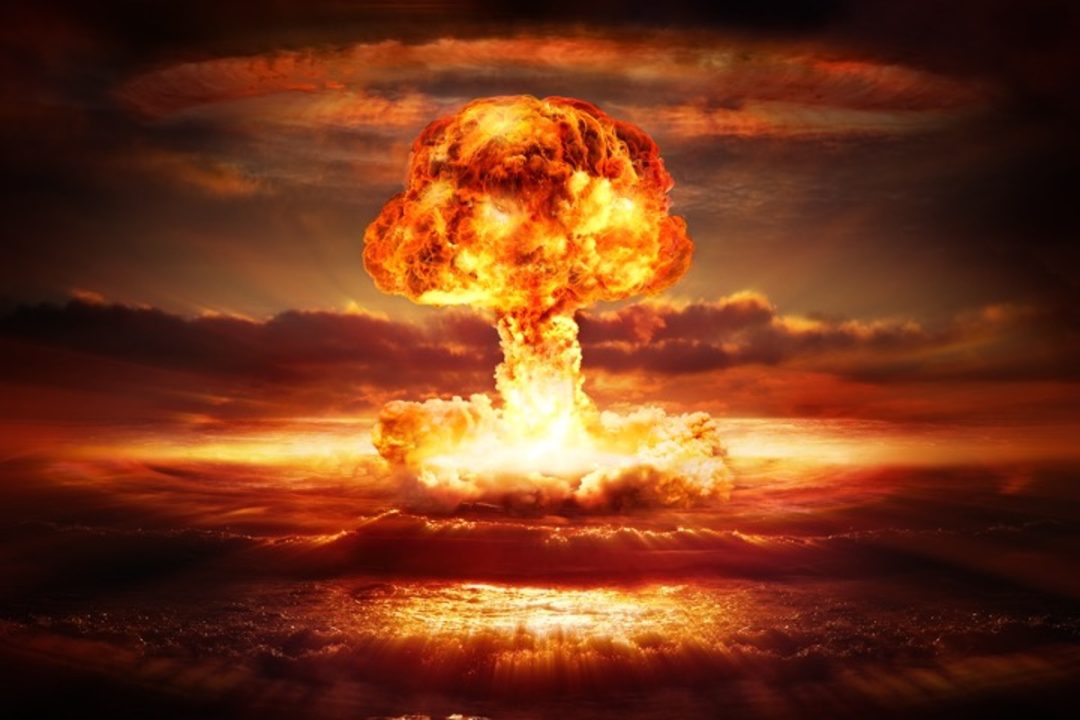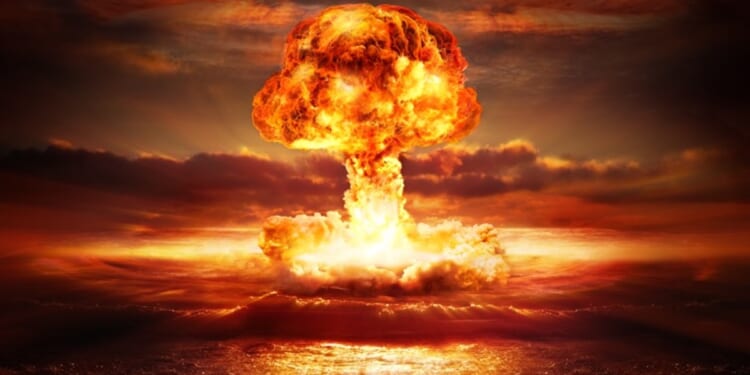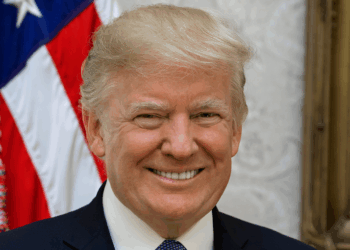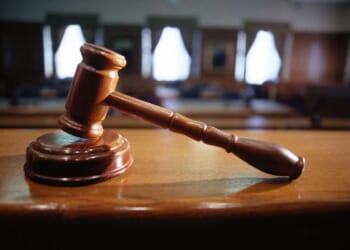
On Thursday, President Donald Trump ordered his Department of War “to start testing our Nuclear Weapons on an equal basis” with Russia and China. “That process will begin immediately,” added the president.
The announcement posted on social media quotes “other countries’ testing programs” as justification, though it did not specify which ones. Russia has not conducted a verified full-scale nuclear explosion since the early 1990s. It continues to test and deploy new delivery systems. China conducted its last known nuclear explosive test in 1996. The country, however, is apparently expanding tunnel networks and support buildings at its Lop Nur test site. It also routinely conducts missile and subcritical experiments. These activities fall short of open nuclear detonations, yet collectively signal renewed competition in nuclear readiness and modernization.
The United States, for its part, has also never stopped testing its nukes — only the method has changed. It has avoided explosive trials, those that produce a self-sustaining chain reaction, since 1992. Instead, the arsenal is maintained through subcritical experiments and high-fidelity computer simulations. Trump’s phrasing left unclear whether he intended to authorize an actual nuclear blast or merely rebrand these ongoing activities under a more aggressive mandate.
Later, however, he signaled that the new tests could go beyond existing methods. Asked where the tests would occur, he said, “It’ll be announced. We have test sites.”
The Arsenals
The world’s nuclear firepower remains overwhelmingly concentrated in the hands of three states. According to the Stockholm International Peace Research Institute (SIPRI) Yearbook 2025, the global inventory stood at roughly 12,241 warheads as of January 2025. Of these, about 9,600 are believed to be in active military stockpiles and available for potential use. Nearly all belong to the United States and Russia.
China’s arsenal is much smaller but expanding rapidly. It now holds at least 600 warheads, having added roughly a hundred each year since 2023, according to recent intelligence estimates. SIPRI does not always disclose precise figures for the United States and Russia in its public summaries, but other assessments put each country’s total above 5,000 warheads.
In short, the United States remains one of the two largest nuclear powers, but not significantly ahead of Russia in sheer numbers. China, indeed, remains a “distant third,” to use Trump’s words, though its growth trajectory is unmistakable. The concentration of power in Washington and Moscow means that even a modest shift in their nuclear posture — such as a return to live testing — reverberates worldwide.
There are nine states that possess nuclear weapons. Besides the aforementioned three, they include the United Kingdom, France, India, Pakistan, the Democratic People’s Republic of Korea (North Korea) and Israel. All of them, says SIPRI, “continued intensive nuclear modernization programmes in 2024, upgrading existing weapons and adding newer versions.”
U.S. Testings
The United States has observed a voluntary moratorium on explosive nuclear testing since 1992, though it retains the ability to resume such tests at the Nevada National Security Sites (NNSS). The halt originated with the Hatfield–Exon–Mitchell Amendment, signed into law by President George H.W. Bush. It banned underground nuclear explosions after September 30, 1992, and directed Washington to pursue a permanent ban. President Bill Clinton extended the moratorium indefinitely in 1993.
Since then, Washington has relied on what Congress calls “Science-Based Stockpile Stewardship.” Running the program is the National Nuclear Security Administration (NNSA), a part of the Department of Energy (DOE).
The NNSA says the program’s mission is to “help ensure the nation’s nuclear weapons stockpile remains safe, reliable, and secure from our enemies.” Because the United States no longer conducts full-scale nuclear tests,
stockpile scientists and engineers now obtain data from breakthrough scientific experiments, engineering audits and analysis, high-tech computer simulations, and world-class diagnostic measurement systems.
The most sensitive of these experiments are subcritical tests. Conducted nearly 1,000 feet underground, they use chemical high explosives to generate extreme pressures on small quantities of plutonium. As the NNSA explains,
What makes the experiments subcritical is that the configuration and quantities of explosives and weapons-relevant quantities of plutonium do not allow a self-sustaining nuclear chain reaction, or criticality, to occur.
According to a Congressional Research Service (CRS) report from August, the NNSA has conducted 34 subcritical experiments since the moratorium began. The agency’s administrator said in 2024 that the United States has “no technical reasons” to resume explosive testing.
While the moratorium is unilateral, it aligns with the global de facto ban established by the Comprehensive Nuclear-Test-Ban Treaty (CTBT). It prohibits “all nuclear test explosions, whether for military or civilian purposes.” The United States signed the treaty in 1996, but the Senate has never ratified it. Still, the U.S. has continued to observe its core provisions.
Nevada
At the heart of America’s nuclear legacy sits the Silver State. The NNSS, located about 65 miles northwest of Las Vegas, hosted 928 of the 1,054 U.S. nuclear explosive tests conducted between 1945 and 1992. That is more than any other place on earth. For decades, mushroom clouds were visible from downtown Las Vegas. Generations of Nevadans have lived with the environmental and health consequences of those experiments.
It is therefore not surprising that Nevada’s elected officials reacted sharply to President Trump’s announcement. Representative Dina Titus, a Democrat, said she would “be introducing legislation to put a stop to this.”
Senator Jacky Rosen, also a Democrat, condemned it as a direct violation of assurances given by Trump’s own nominees:
This directly contradicts the commitments I secured from Trump nominees — and the opinion of Administration officials who certify our nuclear stockpile — who’ve told me explosive nuclear testing would not happen & is unnecessary.
In testimony in May, Vice Admiral Scott Pappano, Trump’s nominee for principal deputy administrator of the NNSA, told Rosen that he would oppose resuming explosive nuclear testing in Nevada.
A report on the Nevada Current news website connected Trump’s announcement to Project 2025. The sweeping plan is now being put into action, with several of its key authors holding senior roles in the Trump administration. According to the report,
Along with calling for resuming work on a nuclear waste dump at Yucca Mountain, Project 2025 … outlined a plan to “restore the nuclear infrastructure” and to “restore readiness to test nuclear weapons at the Nevada National Security Site (NNSS), formerly the Nevada Test Site, to ensure the ability of the U.S. to respond quickly to asymmetric technology surprises.”
Moscow and Beijing
The Kremlin responded cautiously but critically to Trump’s announcement. Spokesman Dmitry Peskov said Russia had not resumed nuclear explosive testing. He emphasized that its recent weapons trials, such as that of the Burevestnik missile, are not nuclear tests. He warned, however, that should anyone break the moratorium, “Russia will act accordingly.”
Beijing’s response was even more measured. A Chinese Foreign Ministry spokesman urged the United States to “earnestly fulfill its obligations under the Comprehensive Nuclear Test Ban Treaty and honor its commitment to suspend nuclear testing.”
The timing of Trump’s announcement comes as arms-control frameworks erode and the New START treaty between the U.S. and Russia nears expiration. Yet, instead of pursuing dialogue and strengthening mutual agreements, Washington is signaling its readiness to raise tensions. That shift also comes amid the rise of advanced military technologies — artificial intelligence, hypersonic weapons, and autonomous systems — that are already beginning to redefine the nature and tempo of warfare.




![Hegseth Demands Fitness Requirements, Says 'Fat Troops' 'Not Who We Are' [WATCH]](https://teamredvictory.com/wp-content/uploads/2025/09/Hegseth-Demands-Fitness-Requirements-Says-Fat-Troops-Not-Who-We-350x250.jpg)






